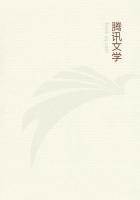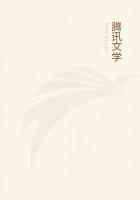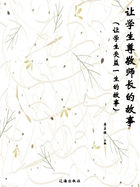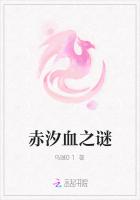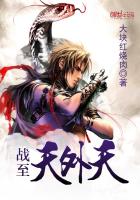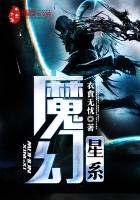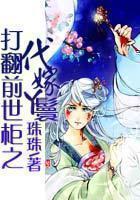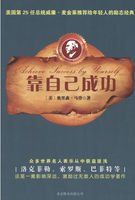The eggs of these quadrupeds are formed in the same way as those of birds, for they are hard-shelled and two-coloured, and they are formed near the hypozoma as are those of birds, and in all other respects resemble them both internally and externally, so that the inquiry into their causes is the same for all.But whereas the eggs of quadrupeds are hatched out by the mere heat of the weather owing to their strength, those of birds are more exposed to destruction and need the mother-bird.Nature seems to wish to implant in animals a special sense of care for their young: in the inferior animals this lasts only to the moment of giving birth to the incompletely developed animal; in others it continues till they are perfect; in all that are more intelligent, during the bringing up of the young also.In those which have the greatest portion in intelligence we find familiarity and love shown also towards the young when perfected, as with men and some quadrupeds; with birds we find it till they have produced and brought up their young, and therefore if the hens do not incubate after laying they get into worse condition, as if deprived of something natural to them.
The young is perfected within the egg more quickly in sunshiny weather, the season aiding in the work, for concoction is a kind of heat.For the earth aids in the concoction by its heat, and the brooding hen does the same, for she applies the heat that is within her.And it is in the hot season, as we should expect, that the eggs are more apt to be spoilt and the so-called 'uria' or rotten eggs are produced; for just as wines turn sour in the heats from the sediment rising (for this is the cause of their being spoilt), so is it with the yolk in eggs, for the sediment and yolk are the earthy part in each case, wherefore the wine becomes turbid when the sediment mixes with it, and the like applies to the eggs that are spoiling because of the yolk.It is natural then that such should be the case with the birds that lay many eggs, for it is not easy to give the fitting amount of heat to all, but (while some have too little)others have too much and this makes them turbid, as it were by putrefaction.But this happens none the less with the birds of prey though they lay few eggs, for often one of the two becomes rotten, and the third practically always, for being of a hot nature they make the moisture in the eggs to overboil so to say.For the nature of the white is opposed to that of the yolk; the yolk congeals in frosts but liquefies on heating, and therefore it liquefies on concoction in the earth or by reason of incubation, and becoming liquid serves as nutriment for the developing chick.If exposed to heat and roasted it does not become hard, because though earthy in nature it is only so in the same way as wax is; accordingly on heating too much the eggs become watery and rotten, [if they be not from a liquid residue].The white on the contrary is not congealed by frost but rather liquefies (the reason of which has been stated before), but on exposure to heat becomes solid.Therefore being concocted in the development of the chick it is thickened.For it is from this that the young is formed (whereas the yolk turns to nutriment) and it is from this that the parts derive their growth as they are formed one after another.This is why the white and the yolk are separated by membranes, as being different in nature.The precise details of the relation of the parts to one another both at the beginning of generation and as the animals are forming, and also the details of the membranes and umbilical cords, must be learnt from what has been written in the Enquiries; for the present investigation it is sufficient to understand this much clearly, that, when the heart has been first formed and the great blood-vessel has been marked off from it, two umbilical cords run from the vessel, the one to the membrane which encloses the yolk, the other to the membrane resembling a chorion which surrounds the whole embryo;this latter runs round on the inside of the membrane of the shell.
Through the one of these the embryo receives the nutriment from the yolk, and the yolk becomes larger, for it becomes more liquid by heating.This is because the nourishment, being of a material character in its first form, must become liquid before it can be absorbed, just as it is with plants, and at first this embryo, whether in an egg or in the mother's uterus, lives the life of a plant, for it receives its first growth and nourishment by being attached to something else.
The second umbilical cord runs to the surrounding chorion.For we must understand that, in the case of animals developed in eggs, the chick has the same relation to the yolk as the embryo of the vivipara has to the mother so long as it is within the mother (for since the nourishment of the embryo of the ovipara is not completed within the mother, the embryo takes part of it away from her).So also the relation of the chick to the outermost membrane, the sanguineous one, is like that of the mammalian embryo to the uterus.
At the same time the egg-shell surrounds both the yolk and the membrane analogous to the uterus, just as if it should be put round both the embryo itself and the whole of the mother, in the vivipara.
This is so because the embryo must be in the uterus and attached to the mother.Now in the vivipara the uterus is within the mother, but in the ovipara it is the other way about, as if one should say that the mother was in the uterus, for that which comes from the mother, the nutriment, is the yolk.The reason is that the process of nourishment is not completed within the mother.
As the creature grows the umbilicus running the chorion collapses first, because it is here that the young is to come out; what is left of the yolk, and the umbilical cord running to the yolk, collapse later.For the young must have nourishment as soon as it is hatched;it is not nursed by the mother and cannot immediately procure its nourishment for itself; therefore the yolk enters within it along with its umbilicus and the flesh grows round it.
This then is the manner in which animals produced from perfect eggs are hatched in all those, whether birds or quadrupeds, which lay the egg with a hard shell.These details are plainer in the larger creatures; in the smaller they are obscure because of the smallness of the masses concerned.

